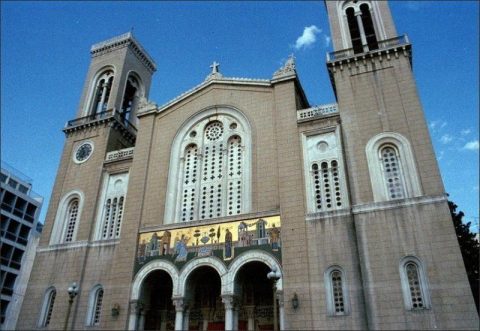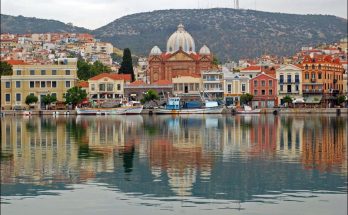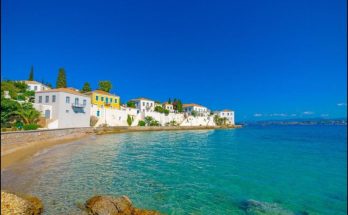The Church of Saint Nicodemus, which is now used for the Russian service, stands almost next door to the modern English church, and is a good example of the brick and mortar work which the Byzantine architects knew so well how to manage. Instead of the heavy stone lintels and columns with arches of concrete that had characterized the old basilicas, these Byzantine churches, built with brick and mortar, gained a new freedom in soaring vaulted spaces of dome and cupola. The red bricks that were used decoratively divided the courses of stone on the lower walls of the church, and on the higher levels broke into symbolic devices.
The plan of this Church of Saint Nicodemus is much the same as that of Daphni. The one important difference is that a woman’s gallery is here placed over the narthex and lower sides. At Daphni, a monastery church, no gallery for women was needed. Diehl admires the gallery from the architectural point of view. It allows the height of the vaults to be proportioned to their size, while the inner walls under the gallery are furnished with an arcade. Millet places the date of this building before the middle of the eleventh century. It is the only “city church” belonging to the larger group. The other churches of this type are found attached to wealthy monasteries in the country.
If a large church were wanted in Athens itself, it was always easy to convert an old temple into a Christian church. Thus the Parthenon was used as the Church of Our Lady, and the Temple of Theseus became the Church of Saint George. Of the paintings on the interior of the Parthenon enough remains to suggest in what strange guise the Christian artists made the heathen shrine conform to Byzantine models. There may once have been other large Byzantine churches in Athens, but if so they are among those that have been destroyed.
Visits: 265



